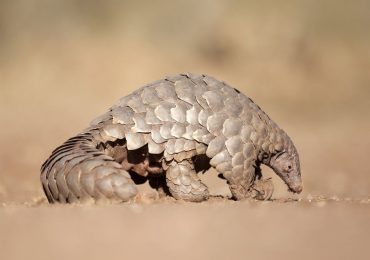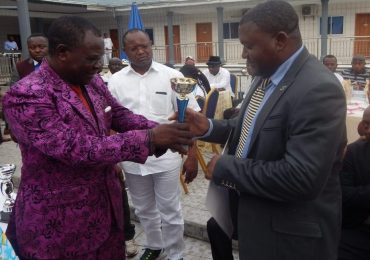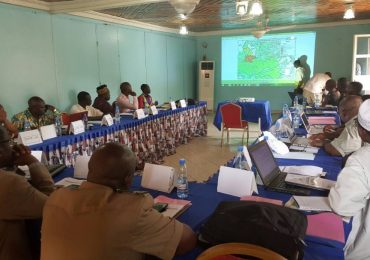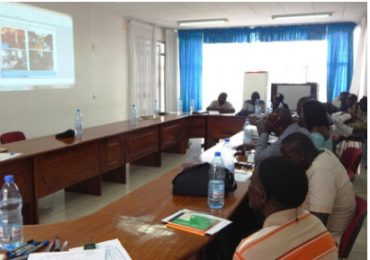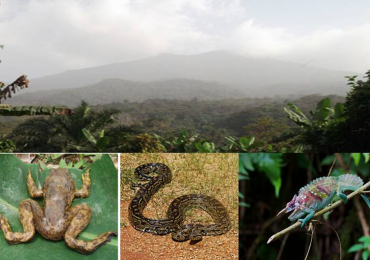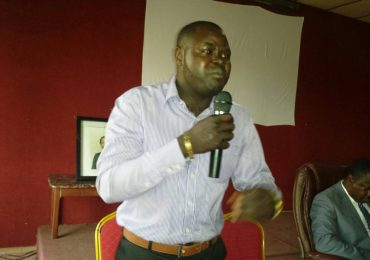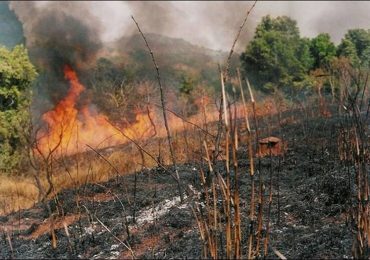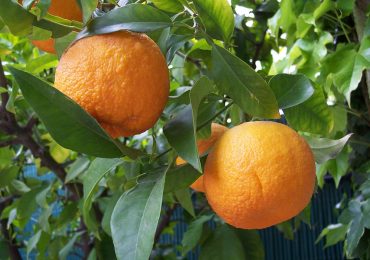
By 1963, Akwaya was already a territory in decline. And the leaders knew it. Akwaya has missed many development warning signs. The realities are chilling, even after 50 years. Swimming across dangerous rivers to go to school or market during the rainy season is a daily deadly ritual. Humans, and sometimes an unfortunate vehicle, get swept away by strong currents. Acquiring a national identity card in Akwaya is a matter of choice – those close to Mamfe go to Mamfe, those close to Bamenda get their ID cards from Bamenda if they have 10,000 francs CFA in the dry season and 15,000 francs CFA in the rainy season. These rates are one-way fares. Those caught in the middle of Akwaya have no ID cards.
By Azore Opio
If you follow geography, or even just local politics, you might have heard of a place called Akwaya. It is a tangle of

villages sandwiched between Nigeria and Cameroon – dense forest in the south and savannah in the north. In Cameroon, it abuts Momo and Menchum Divisions in the northwest. Tinta Sub-District it was called under the West Cameroon government. Akwaya acquired its new name through Decree No. 63/DF/397 of November 13, 1963 signed by President Ahmadou Ahidjo amending the administrative district and headquarters to read Akwaya, Mamfe Division.
In 1965, Nigerian police arrested some 200 Cameroonians returning from Otanga market in Nigeria where they had gone to sell rice. As the Divisional Officer of Akwaya then, A.M Njuzy, cited in a correspondence to the SDO of Mamfe, the Cameroonians were arrested because they had not tax tickets for 1965-66. The Cameroonian traders were fined 10 shillings each and those who could not pay were sentenced. They were released afterwards.

Akwaya is a sanctuary of bitter-sweet ecstasy. Not naive-type of ecstasy, which is merely the absence of knowledge. But deep, painful joy of knowing, yet being unable to act. Aching joy that comes through a lifetime of living enclosed with rapid rivers, streams and springs. Cross River, River Ebinsi, River Tachene, River Mamfi, River Eveh, Mone River, Tafu River, Makumonou River. And many others filled with fish. The joy of knowing you have lived a life fenced off from the rest of the world and holding back. And knowing that you are surrounded by endemic wildlife like elephants, buffalos and gorilla; a biodiversity hotspot in Africa.
With a surface area of 488km2, an estimated population of 120,115 (Mectizan distribution results from Public Health) or 85,000 (FORUDEF), Akwaya has five Court Areas – Takamanda, Boki, Mbulo, Assumbo and Mesaga-Ekol. Accessing these court areas from the administrative headquarters requires concerted efforts and zig-zag movements across treacherous terrain – thick forests, steep hills and swift-flowing rivers. Added to these are 68 primary schools and 11 secondary schools. Three years after the creation of the sub-division, it was only administratively natural to give it political chambers from which to command the people’s affairs – a council. The Akwaya Council is 136 km away from Mamfe. Today, as it was 50 years ago, access to Akwaya from Mamfe could be done by walking, if you like hiking, or by motorcycle. If you travel by vehicle, then it is only by a detour through neighbouring Nigeria, skirting about 99 villages with the journey stretching some 400 kms.
It would be a painful disillusionment if it were to be assumed that travelling to Akwaya through Nigeria is a recent

pleasantness. No. Here is the kicker. In January 1967, then Commissioner of Police Buea, M.H. Ntune, wrote to the Nigerian Consul in Buea. The letter informed, or rather, appealed to the Consul to allow the Secretary of State charged with Police Affairs in the Prime Minister’s Office, Honourable Ncha, accompanied by four West Cameroon police to pass through Nigeria to reach Akwaya.
“I should be grateful if you would instruct your men at Nfum and Obudu in Ikom and Ogoja, respectively to allow these officers free passage to and fro,” reads Commissioner Ntune’s letter.
Sad Wrinkle
The most surprising wrinkle in Akwaya’s sorry tale is roads! This wrinkle so inspired one J. Tassa who penned an impassioned epistle lamenting the dilemma of Akwaya people – being robbed as they commuted to Otanga market in Nigeria; travelling 192 km for nine days to faraway Mamfe with head loads of rice or palm kernel so as to buy a piece of cloth or salt only to called a “Nsane” by the Banyangi, a skewed hint to the remoteness of Akwaya. A place without roads. No medical treatment or other amenities.

How could anyone who is serious about life wish to live in Akwaya; that site for sore eyes? Yet there were people ready to dwell in Akwaya and blaze the trail for development over treacherous hills and through ruthless valleys, in good times and bad.
Fr. John Brummelhuis a.k.a Father the Road, also called Father Catepillar alias Father Bulldozer of the Catholic Mission Akwaya in 1968 wanted to cut a development trail in Akwaya. The roads problem had to be tackled first. Father Bulldozer had had the flavour of trekking from Mamfe to Akwaya from July 30 to August 10 and was not about to forget the journey. So he wrote to the Principal Community Development Officer Buea, the Minister of Community Development and Cooperatives Buea, the Prime Minister West of Cameroon and the Vice-President of Cameroon – three roads would disenclave Akwaya: Obudu-Otanga (14km); Eshimbi in Wum to Akwaya and Mamfe-Akwaya. The people were ready to dig. Appealing as Father Bulldozer’s theology was, it failed to touch any hearts. It was just a fancy notion of improving a bad situation.
Overside
What Akwaya has not gotten is what the people feared; roads! If the sub-division remains a depressingly remote and

backward administrative district, it is probably thanks to fate, for documentary evidence affirms that it had been on the threshold of development, if only administrative.
Sometime in February 1964, the sum of 5 million francs was allocated for the construction of staff quarters at Akwaya. There had also been plans to connect Akwaya in Mamfe Overside – Court Areas of Takamanda, Boki, Mbulu, Assumbo, Messaga, Ekol, Menka and Widekum – (Menka and Widekum) were cut off and appended to Gwofon, now Momo Division, to the communication grid through VHF (Very High Frequency) communication system installed on Tinta Hill. Community development projects receiving attention at the time included a ferry service which disappeared almost immediately it was completed, a completed airstrip and road construction.
Although many discussions on road construction had been held between local authorities and government officials, the deliberations might have been used to fill the drawers or to decorate the shelves of offices. This pathetic drive to develop Akwaya’s road network seemed to throw Akwaya into a chronic lack of cohesiveness that only fortified its attachment to Nigeria. Hon. E.E Manga, during a development meeting in 1970, had commented thus; “Akwaya is fast becoming Nigeria than Cameroon” as most of its trade transactions were carried out with Nigeria because of lack of access roads to the Divisional headquarters in Mamfe. In that same 1970, Dennis Hayden, Permanent Secretary had argued for Akwaya to be upgraded to a full division. Hayden described Akwaya (Mamfe Overside) as a big grapefruit: “It will take ages to get to the centre. All that is possible over the next ten years is to take bites out of the sides.”
Hayden had suggested that Akwaya be connected by road through Otanga-Akwaya, Widekum-Dinka, Widekum-Befang, Mamfe-Akwa, Modelle to Ballin and Otanga-Akwaya, Acha-Tugi-Assam on to Acha-Tugi-Ekaw road network.
Forty-five years after Hayden’s advocacy, Akwaya is still more Nigeria than Cameroon.



